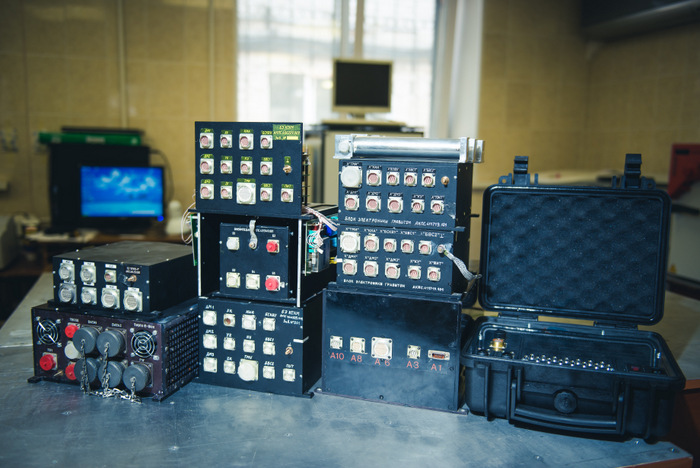Scientists at Samara Academician Korolev National Research University, using the promising KMU-1 micro-acceleration compensating system on the Aist-2D satellite, have begun optimizing a new control system for the small-sized space apparatus (SSA).
The Aist-2D SSA was launched from Vostochny Russian spaceport on April 28, 2016. Its positioning in outer space is carried out using an on-board movement control system (MCS).
The Aist-2D SSA was launched from Vostochny Russian spaceport on April 28, 2016. Its positioning in outer space is carried out using an on-board movement control system (MCS).
Besides the MCS, the Aist-2D features a KMU-1 micro-acceleration compensating system developed at the Space Apparatus Construction Institute (SACI), Samara University. SACI and Progress RSC staff conducted the development of KMU-1 operating algorithms. The KMU-1 system marked an extension and advancement of activities related to the MagCom system (micro-acceleration magnet compensator), which was tested on the AIST SSA of the first generation launched into space in 2013.
The KMU-1 system is designed for controlling apparatus positioning and compensating for rotational micro-accelerations in the low-frequency spectrum range. It helps to precisely determine at any given moment exact apparatus positioning using GPS data coming from the outside, its orientation with respect to the sun, and orientation in the Earth’s magnetic field. The KMU-1 system is also capable of providing satellite positioning by the Earth’s magnetic field vector.
Device composition is as follows: electronics unit, two magnetic meter transmitters, sun transmitter on the AIST-2D SSA front panel; five flash transmitters i.e. one per each edge of the apparatus, and three solenoids designed for positioning the satellite by the Earth’s magnetic field vector and compensating for rotational micro-accelerations.
“When developing the KMU-1, we fully satisfied the established requirements for the service systems of space apparatus. In particular, in order to reach 99.95 % reliability, twofold redundancy for any item of the electronics unit is ensured, i.e. any power supply, onboard computer, sun transmitter, solenoid or magnetic meter control boards,” stressed Aleksey Piyakov, Senior Research Assistant, Ph.D. in Engineering Science, SACI Samara University.
The Aist-2D mission plan provides for testing of the KMU-1 device package and space apparatus measuring-and-control algorithm embedded in the system. In this regard, the KMU-1 system since being switched on operates continuously in parameter measuring mode and carries out the calculation of controlling magnetic moments.
At the same time, the Aist-2D mission plan provides for switching the KMU-1 system from the parameter measuring mode to the micro-acceleration compensating operation mode. During this period, the satellite MCS switches off, and the KMU-1 system controls movement. Then, it is switched into the parameter measuring mode again.
Any remote-measurement data on KMU-1 system operation is transmitted to Progress RCS, which relays it to Samara University for detailed analysis. According to Nikolay Semkin, the Director of the Space Apparatus Construction Institute, Samara University, the KMU-1 system is a highly-promising approach that should go on to enjoy wide application on small-sized space apparatus.

 RU
RU  EN
EN  CN
CN  ES
ES 